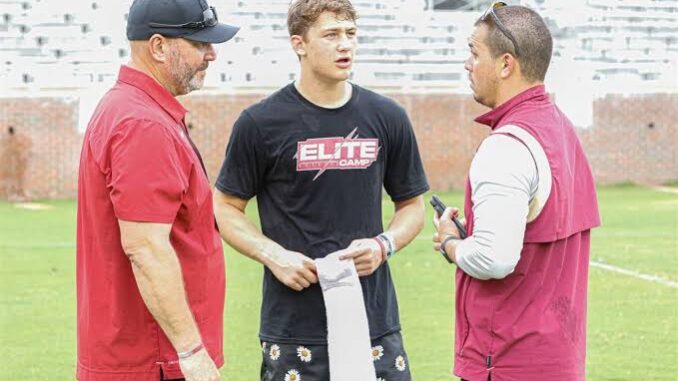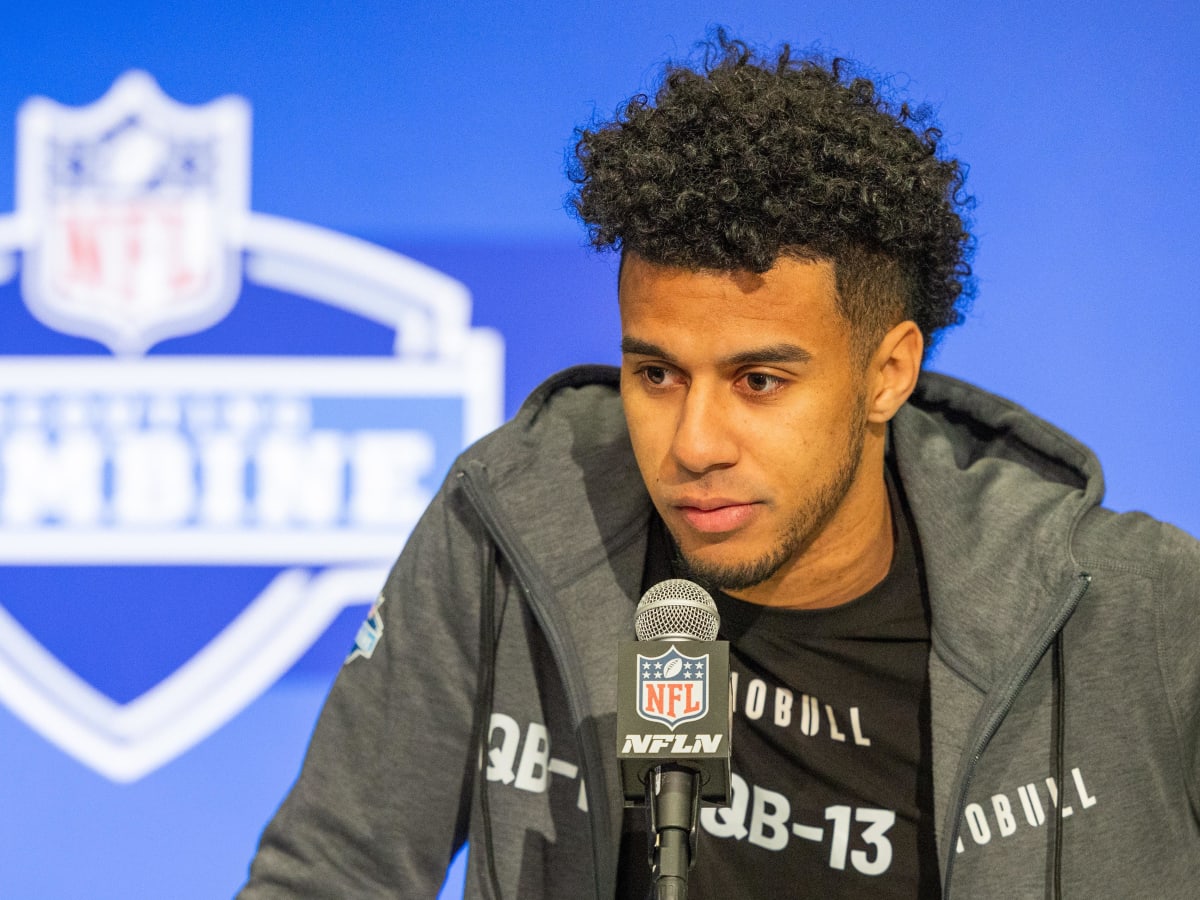
Luke Kromenhoek, a highly regarded quarterback prospect, recently made headlines after publicly expressing dissatisfaction with his contract situation at Florida State University. The crux of his frustration lies in the terms of the agreement, which he believes were prematurely negotiated, leaving him feeling undervalued as a young talent. This situation highlights a broader issue within college sports—the fairness and timing of athlete contracts, particularly when dealing with players at the cusp of their collegiate careers.
The Background
Luke Kromenhoek, known for his impressive skills on the field, has been touted as a future star in college football. His recruitment by Florida State was seen as a significant win for the program, which has been actively rebuilding in recent years. Kromenhoek’s strong arm, quick decision-making, and leadership abilities have set him apart from his peers, making him a highly coveted recruit.
However, what should have been a seamless transition to one of college football’s powerhouses has instead become a contentious issue. Kromenhoek reportedly disagreed with the contract terms offered to him, particularly the timing of the negotiations, which took place early in his recruitment process. He believes the early timing left him with limited leverage and forced him into a contract that doesn’t reflect his true market value as an emerging star.
The Nature of College Athlete Contracts
College sports, particularly football and basketball, have evolved into massive revenue-generating enterprises for universities, media companies, and athletic organizations. With the advent of Name, Image, and Likeness (NIL) agreements, student-athletes can now capitalize on their personal brands, earning compensation beyond scholarships. These NIL agreements are designed to provide athletes with financial compensation for their contributions to their sports and for the use of their likeness in marketing, social media, and other platforms.
However, the introduction of NIL deals has also raised concerns about fairness and equity in contract negotiations. Younger athletes, often still in high school, are now entering into complex contract discussions long before they set foot on a college campus. This can create an uneven playing field, where inexperienced athletes and their families might not fully understand the long-term implications of early contracts.
Kromenhoek’s situation illustrates one of the critical challenges faced by young athletes navigating the new landscape of NIL and recruitment contracts. Although these deals can be lucrative, they often come with strings attached, including early commitments that may not reflect the athlete’s full potential by the time they enter the collegiate level.
The Timing of the Deal
One of Kromenhoek’s primary concerns appears to be the timing of the contract offer. In college sports, recruitment often begins early, with athletes receiving offers from universities before they reach their senior year of high school. While early recruitment can provide stability and peace of mind, it can also lead to situations where athletes feel pressured into making long-term commitments without fully exploring their options.
In Kromenhoek’s case, he believes the contract was negotiated too early in his development as a player. As a result, he feels that he didn’t have the chance to fully showcase his abilities before agreeing to terms that might not reflect his current value. Additionally, with NIL deals becoming more common, the market for college athletes is constantly shifting, meaning that a deal struck early in an athlete’s high school career could be significantly undervalued by the time they reach college.
Kromenhoek’s experience raises important questions about the timing of recruitment and contract negotiations. Should athletes be encouraged to wait until later in their high school careers to negotiate deals that better reflect their potential and value? Or does early recruitment provide essential stability in a highly competitive environment?
Trade Fairness and Leverage in College Sports
The concept of fairness in college athlete contracts extends beyond just timing. It also involves the leverage that athletes have during negotiations. In many cases, young athletes are negotiating against well-established institutions with far greater experience and resources. While athletes are now able to hire agents and legal representatives to help navigate these negotiations, many still feel disadvantaged, particularly if they come from families without a background in sports business.
Kromenhoek’s decision to speak out highlights the importance of transparency and fairness in college sports contracts. He has argued that young athletes should be given more leverage in contract discussions and that universities should be more flexible in allowing athletes to renegotiate their deals as their value increases. This is particularly important in a world where NIL deals can significantly alter an athlete’s earning potential.
Moreover, there is a growing debate about whether college athletes should be allowed to transfer more freely if they believe their initial contract does not adequately reflect their worth. Currently, athletes are often restricted by transfer rules that limit their ability to move between schools without facing eligibility penalties. This creates a situation where an athlete might feel trapped in a contract that no longer suits their needs or value.
The Broader Implications for College Sports
Kromenhoek’s public disagreement with Florida State could have broader implications for college sports, particularly as it relates to the fairness of athlete contracts. His situation is not unique—many athletes have expressed frustration with the current system, which often leaves them feeling powerless in negotiations with universities.
As the NIL era continues to evolve, there will likely be increased scrutiny on how contracts are negotiated and whether athletes are being treated fairly. This includes not only the timing of deals but also the terms, which must adequately reflect an athlete’s value as they grow and develop within their sport. Universities may need to adjust their recruitment strategies to ensure that athletes feel empowered and fairly compensated throughout their collegiate careers.
Additionally, the role of agents and legal representatives in these negotiations will become even more critical. Athletes and their families must be equipped with the knowledge and resources to advocate for themselves in what can be a highly complex and high-stakes environment. Universities, too, have a responsibility to ensure that athletes fully understand the terms of their contracts and are not pressured into making early commitments that could negatively impact their careers.
Conclusion
Luke Kromenhoek’s outspoken criticism of his contract situation with Florida State sheds light on a growing issue in college sports—the fairness and timing of athlete contracts. As NIL deals become more prevalent, young athletes are increasingly finding themselves negotiating complex agreements long before they reach their full potential. Kromenhoek’s case serves as a reminder of the importance of fairness, transparency, and leverage in these negotiations. Moving forward, both universities and athletes will need to adapt to the new realities of college sports to ensur
e that all parties are treated equitably.



Be the first to comment